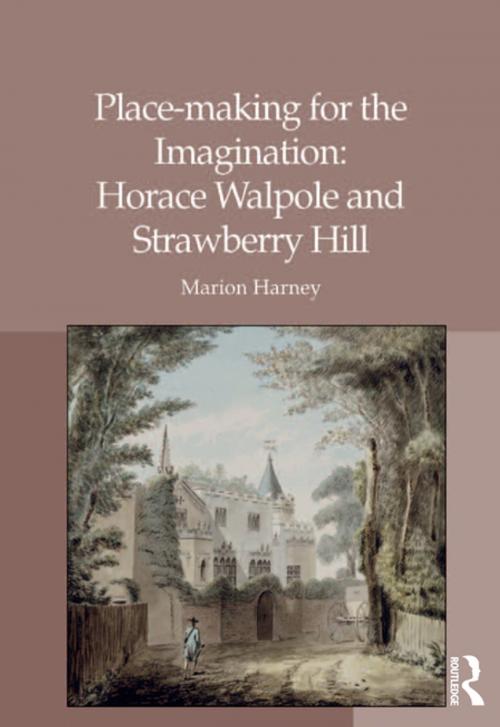Place-making for the Imagination: Horace Walpole and Strawberry Hill
Nonfiction, Art & Architecture, Art History, Architecture| Author: | Marion Harney | ISBN: | 9781317080497 |
| Publisher: | Taylor and Francis | Publication: | April 8, 2016 |
| Imprint: | Routledge | Language: | English |
| Author: | Marion Harney |
| ISBN: | 9781317080497 |
| Publisher: | Taylor and Francis |
| Publication: | April 8, 2016 |
| Imprint: | Routledge |
| Language: | English |
Drawing together landscape, architecture and literature, Strawberry Hill, the celebrated eighteenth-century ’Gothic’ villa and garden beside the River Thames, is an autobiographical site, where we can read the story of its creator, Horace Walpole. This 'man of taste' created private resonances, pleasure and entertainment - a collusion of the historic, the visual and the sensory. Above all, it expresses the inseparable integration of house and setting, and of the architecture with the collection, all specific to one individual, a unity that is relevant today to all architects, landscape designers and garden and country house enthusiasts. Avoiding the straightforward architectural description of previous texts, this beautifully illustrated book reveals the Gothic villa and associated landscape to be inspired by theories that stimulate 'The Pleasures of the Imagination' articulated in the series of essays by Joseph Addison (1672-1719) published in the Spectator (1712). Linked to this argument, it proposes that the concepts behind the designs for Strawberry Hill are not based around architectural precedent but around eighteenth-century aesthetics theories, antiquarianism and matters of 'Taste'. Using architectural quotations from Gothic tombs, Walpole expresses the mythical idea that it was based on monastic foundations with visual links to significant historical figures and events in English history. The book explains for the first time the reasons for its creation, which have never been adequately explored or fully understood in previous publications. The book develops an argument that Walpole was the first to define theories on Gothic architecture in his Anecdotes of Painting (1762-71). Similarly innovative, The History of the Modern Taste in Gardening (1780) is one of the first to attempt a history and theory of gardening. The research uniquely evaluates how these theories found expression at Strawberry Hill. This reassessment of the villa and its associated l
Drawing together landscape, architecture and literature, Strawberry Hill, the celebrated eighteenth-century ’Gothic’ villa and garden beside the River Thames, is an autobiographical site, where we can read the story of its creator, Horace Walpole. This 'man of taste' created private resonances, pleasure and entertainment - a collusion of the historic, the visual and the sensory. Above all, it expresses the inseparable integration of house and setting, and of the architecture with the collection, all specific to one individual, a unity that is relevant today to all architects, landscape designers and garden and country house enthusiasts. Avoiding the straightforward architectural description of previous texts, this beautifully illustrated book reveals the Gothic villa and associated landscape to be inspired by theories that stimulate 'The Pleasures of the Imagination' articulated in the series of essays by Joseph Addison (1672-1719) published in the Spectator (1712). Linked to this argument, it proposes that the concepts behind the designs for Strawberry Hill are not based around architectural precedent but around eighteenth-century aesthetics theories, antiquarianism and matters of 'Taste'. Using architectural quotations from Gothic tombs, Walpole expresses the mythical idea that it was based on monastic foundations with visual links to significant historical figures and events in English history. The book explains for the first time the reasons for its creation, which have never been adequately explored or fully understood in previous publications. The book develops an argument that Walpole was the first to define theories on Gothic architecture in his Anecdotes of Painting (1762-71). Similarly innovative, The History of the Modern Taste in Gardening (1780) is one of the first to attempt a history and theory of gardening. The research uniquely evaluates how these theories found expression at Strawberry Hill. This reassessment of the villa and its associated l















